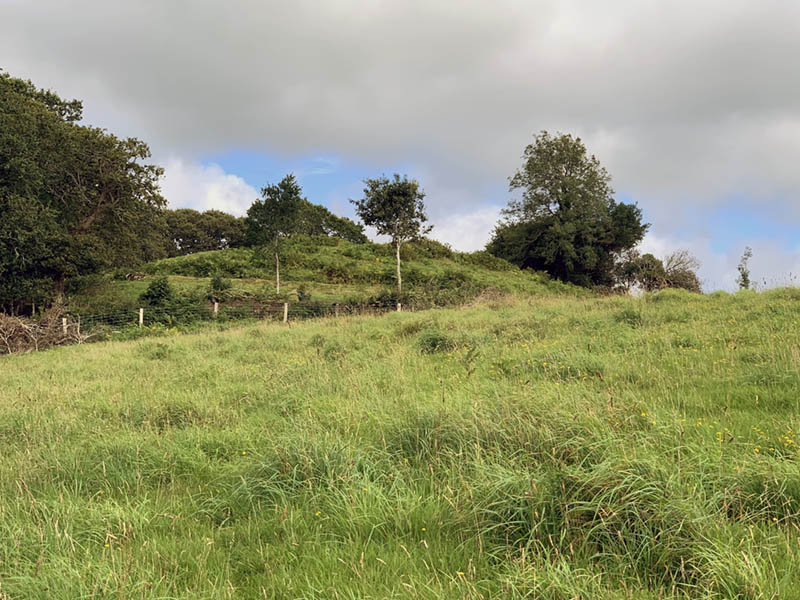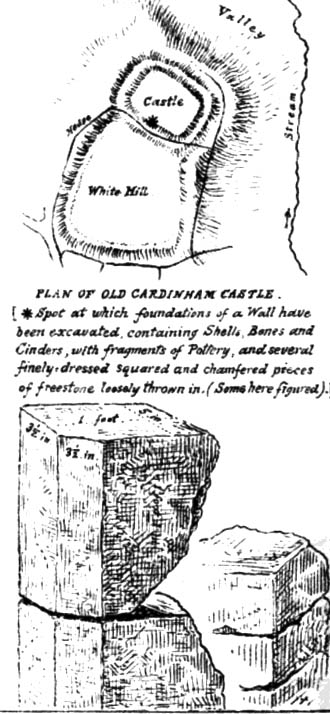
Cardinham Castle, also known as Old Cardinham Castle, was a motte-and-bailey fortification in Cornwall. It was abandoned in favour of Restormel Castle, and only earthworks now remain.
History

Cardinham Castle was probably constructed after the Norman conquest of England, by Richard Fitz Turold, the steward of Count Robert of Mortain. Fitz Turold held the Honour of Cardinham, a feudal landholding of 71 estates across Cornwall, roughly centred on the village of Cardinham.
The castle was built overlooking the village on a steep ridge. It was a motte-and-bailey design, with a bailey approximately 80 m by 60 m (260 ft by 196 ft) and a motte at least 4 m (13 ft) tall beyond it. There appears to have been a chapel within the castle. The bailey was later known as White Hill.
Fitz Turold’s descendents retained the Honour and by 1180 Robert de Cardinham used the location as the basis of his family’s new surname. At some point, at least parts of the castle were rebuilt in stone – surveys and excavations in the 1870s and 1920 recorded a lime-mortared wall and ashlar Pentewan stone.
Robert also rebuilt nearby Restormel Castle in stone, establishing the tin mining town of Lostwithiel at the same time, and before long the Cardinhams were using Restormel in preference to Cardinham Castle. The castle fell into decay and was probably abandoned by the 1260s.
Over the centuries the stonework was robbed and mined to be reused in nearby farm buildings. Although some fragments of the walls could still be seen in the 1870s, in the 21st century only earthworks remain. The site is now protected under UK law as a Scheduled Monument.
Bibliography
- Molyneux, Nicholas A. D. (2003) Restormel Castle: Cornwall. London, UK: English Heritage.
Attribution
The text of this page is licensed under under CC BY-NC 2.0.
